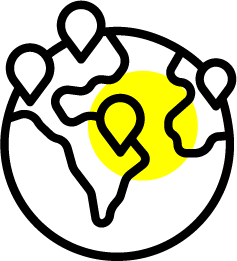
Causes of Death
Our Data
These data provide summaries of the CHAMPS-eligible and enrolled cases across all surveillance sites, offering a clear understanding of child mortality causes. Causes of death are categorized by CHAMPS’ site, etiology, CHAMPS mortality categories, age group, and other filters. Causes of death can be viewed by all causes or specific etiologies, offering critical insights to support paediatric health interventions and promote child survival action.

Quick Facts
Each CHAMPS site has a team of local experts who review the extensive test results and clinical data for each stillbirth or death in a young child and assign underlying, intermediate, and immediate causes of death, as process known as “Determination of Cause of Death (DeCoDe)”. CHAMPS also tracks the health and outcomes of pregnant women in most sites, information that not only improves their health but provides a better understanding of why some stillbirths and newborn deaths occur.

0
Catchment Areas

0
Countries

0
Women in Pregnancy Surveillance Across 7 Countries

0
stillbirths and deaths in liveborn child <5 (stillbirths and child deaths decoded)
Data updated: 26 March 2025
Explore the Data
The CHAMPS Network collects vital data on child causes of death for stillbirths and children under five across nine countries in sub-Saharan Africa and South Asia. Since 2016, CHAMPS has identified causes such as birth asphyxia, malnutrition, and malaria, guiding pediatric health interventions and supporting efforts to prevent child mortality.
DATA IN FOCUS
Recorded Perinatal Deaths
Under-five mortality includes perinatal deaths (stillbirths and early neonatal deaths), neonatal deaths, infant and child deaths.
Our DeCoDe data relating to perinatal deaths is summarised below.
DATA EXPLORER
Causes of Death by Age Group
CHAMPS surveillance sites utilize notification systems which report all under-5 deaths and stillbirths to the local team within 24 hours of the child’s death. Site teams review each notification and contact family members of select cases to determine whether the case meets CHAMPS eligibility criteria (death at age <60 months or stillbirth; and residence in the defined geographic area).
Total Cases Completed
8947
Four Levels of Data Access
Summarized data are updated in real-time and available to all on our web site with one click. These data provide summaries of the CHAMPS eligible and enrolled cases at each surveillance site, as well as determined causes of death across each of our sites. Cause of death data are categorized by Stillbirth, Neonate, and Infant and Child, and provide separate views for all causes of death, and infectious etiologies. Data summaries are updated daily.
CHAMPS Data DashboardsDe-identified data can be downloaded as a curated standard data set after registration and electronic acceptance of a Data Transfer Agreement (DTA).
Standard data set includes:
- Case demographics (including MITS measurements), verbal autopsy, DeCoDe results, TAC results, and lab results
- Additional curated standard datasets in development
- Data transformations performed to de-identify this dataset: Case identifiers replaced with surrogates; dates shifted; narrative/summary fields removed
To view documentation for the de-identified dataset prior to downloading, obtain descriptive metadata or the citation for the dataset, please visit the CHAMPS Dataverse and scroll to the bottom of the page.
To access the CHAMPS R package, visit our GitHub Portal. The package provides utilities to read and transform L2 s data into convenient formats, functions to compute several statistics of interest, and some utilities for presenting these statistics in various formats such as plots and HTML tables.
A curated limited data set is available following registration and execution of a Data Use Agreement (DUA). The delivery time for this data set is dependent on DUA execution, and is estimated at 4-8 weeks. Please request this data set via the link below and follow the instructions to complete and upload the Data Use Agreement (DUA).
Standard limited dataset includes:
- Case demographics (including MITS measurements), verbal autopsy, DeCoDe results, TAC results, and lab results
- Additional curated limited datasets in development
- Data transformations performed to created this limited dataset: Case identifiers replaced with surrogates; narrative/summary fields removed
To view documentation for the limited dataset prior to downloading, obtain descriptive metadata or the citation, please visit the CHAMPS Dataverse and scroll to the bottom of the page.
To access the CHAMPS R package, visit our GitHub Portal. The package provides utilities to read and transform L2 data into convenient formats, functions to compute several statistics of interest, and some utilities for presenting these statistics in various formats such as plots and HTML tables.
Potentially identifiable datasets are only available via request. A CHAMPS staff member will contact you and provide further instructions once we receive your request.
A potentially identifying data set is available following registration, execution of a Data Use Agreement (DUA), and IRB approval. Timing is dependent on IRB approval and DUA execution, and is estimated at 3-6 months.
Privacy Constraints: Dependent on IRB approval – may include case photos, geo-location coordinates, free-text and narrative fields.





